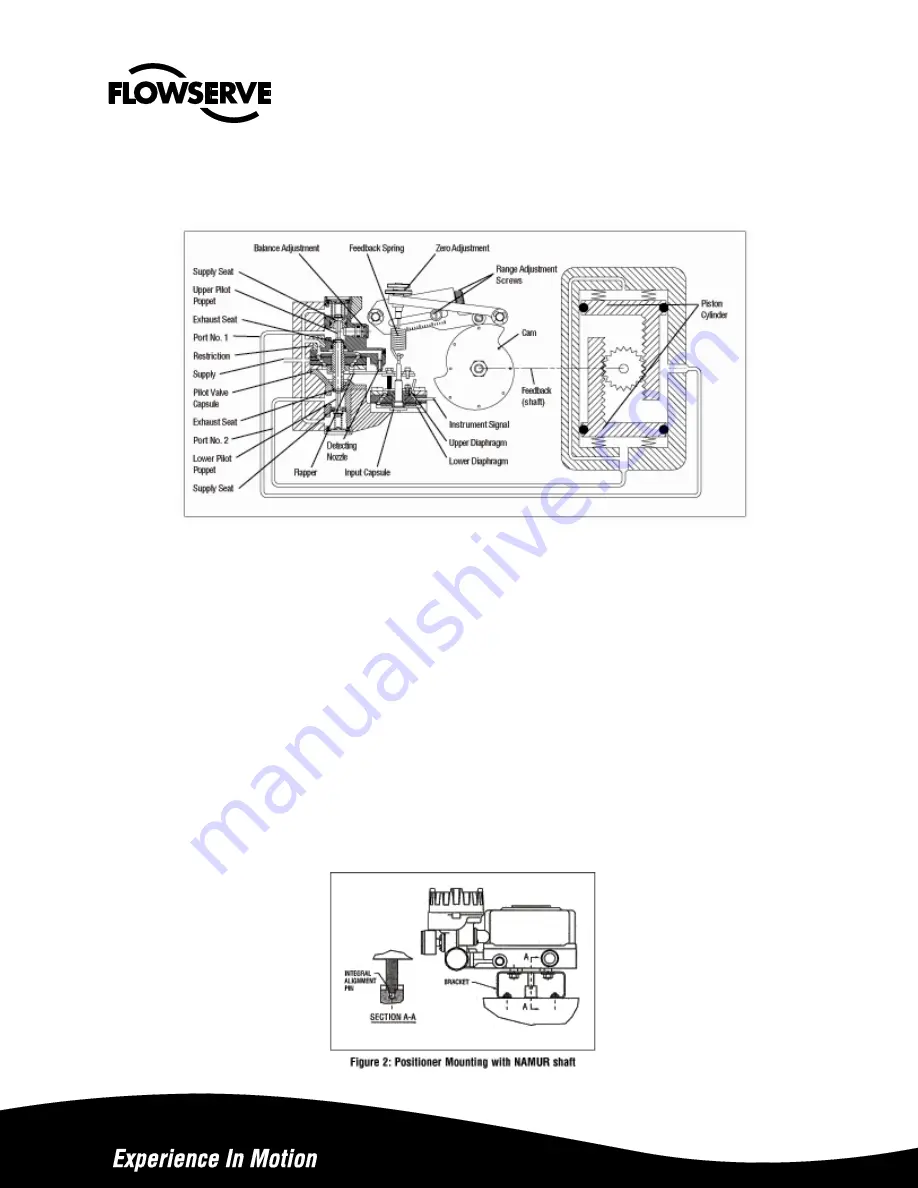
When the opposing forces balance exactly, the system will be in equilibrium and the stem will be in the exact position
called for by the instrument signal. If the opposing forces are not in balance, the input capsule will move up or down
and, by means of the pilot-valves, will change the output pressures, moving the stem until the tension on the feedback
spring exactly opposes the instrument signal pressure
Figure 1: Apex 8000 Positioner Schematic for Air-to-Open
The sequence of operation is as follows: An increase in instrument signal pressure forces the input capsule
downward. Displacement of the capsule in turn moves the flapper away from the detecting nozzle. This allows a larger
flow rate through the nozzle, decreasing the pressure exerted on the top of the pilot valve capsule.
Supply air biases the pilot-valve in an upward direction. As the capsule moves up, it will close the exhaust seat of the
upper pilot poppet and open the supply seat, which applies increased air pressure to the bottom cylinder port. At the
same time, the pilot-valve capsule will open the exhaust seat for the lower pilot poppet; thus, decreasing pressure to
the top cylinder port.
This difference in pressure will drive the piston outward, rotate the pinion and stretch the feedback spring until the
spring tension exactly opposes the force resulting from the instrument signal pressure. At this point, the flapper will be
moved toward the detecting nozzle to restore the pressure above the pilot-valve capsule to its equilibrium value. As a
force-balanced condition is approached, the pilot-valve capsule will be forced back to a neutral position where the
pilots are neither supplying air to, nor exhausting air from, their respective sides of the piston.
A decrease in instrument signal pressure reverses the described actions and cause a proportional inward movement
of actuator pistons and a reversal in pinion direction.


















